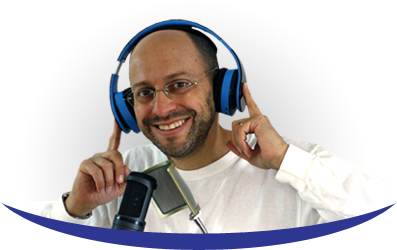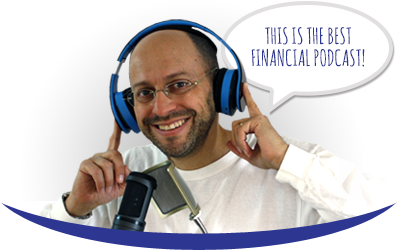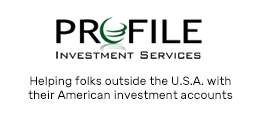
Can a conservative investor find predictable investments?
An investor who wants to limit risk has two options for predictable investments: CDs (certificates of deposit) and bonds.
Doug explains what bonds are and the pros and cons of owning bonds. Although bonds are frequently considered one of the safer types of investments, there is a catch… the institution could call the bond back. Doug clarifies what that means, and asks if that’s a risk you want to take. To learn more about bonds, watch the Bond Ladder mini course available on Doug’s corporate site, Profile-Financial.com.
How to avoid the biggest mistake new retirees make
Ken Heise, president of the Heise Advisory Group in St. Louis, MO and co-host of the podcast Your Retirement Highway joins the show to discuss retirement. Ken realizes one major mistake that new retirees make…poor budget planning, and shares how to create a realistic budget for retirement. Get your budget and finances ready for your post-working years.
Check out Ken’s radio show at yourretirementhighway.com. You can also find him at heiseadvisorygroup.com.
“Ken Heise offers investment advisory services through AE Wealth Management (AEWM). AEWM and Heise Advisory are not affiliated companies. Investing involves risk, including the loss of principal.
Heise Advisory is an independent financial services firm helping individuals create retirement strategies using a variety of investment and insurance products to custom suit their needs and objectives. Neither the firm nor its agents or representatives may give tax or legal advice. Individuals should consult with a qualified professional for guidance before making any purchasing decisions.”
If you’re not already receiving updates on new episodes, sign up now, and as a special bonus, receive Doug’s free ebook The Retirement Planning Book.
Watch Is There Such a Thing as Predictable Investments? on YouTube.
Read the TranscriptInterview With Ken Heise
“Find something in your life that has meaning. Something that will occupy your time meaningfully, when you’re retired.” Ken Heise, cohost of Your Retirement Highway podcast and president of the Heise Advisory Group, shares this tip and more in this interview.
Douglas Goldstein: I’m very excited to have on, The Goldstein on Gelt Show, Ken Heise. He is the president of the St. Louis-based Heise Advisory Group.
He also is the cohost of a weekly radio show called, Your Retirement Highway. Ken, it seems like you and I are very similar. We both have our own private financial practice and one on the radio. How are you doing?
Ken Heise: I’m doing great, Doug.
Douglas Goldstein: When people are thinking about moving to Israel, they say, “Oh, my gosh. Everything is going to be different.” To which I reply, “A lot of the basic precepts of retirement planning are the same, no matter where you live.”
Mistakes That People Make When They Are Planning For Retirement
What are some of the big mistakes that you see people make, when they are planning for retirement?
Ken Heise: I think the biggest mistake that I see is people not understanding what they’re going to spend when they retire.
When I ask people who are planning to retire, the simple question,” What do you plan on spending?” people usually haven’t thought it through.
A lot of it is because so many financial people have brainwashed them into rule-of-thumb-type things like, plan 80% of your pre-retirement income.
Douglas Goldstein: Where did that one come from? I remember 25 years ago when I started on Wall Street, when I was in what we refer to as “stockbroker school,” that’s what they told us, but is there evidence that that’s true?
Ken Heise: I know of absolutely none.
Douglas Goldstein: Me neither.
Ken Heise: I grew up in Wisconsin and some of my relatives’ retirement plan was to move up by a lake in a cabin, then fish and hunt for the rest of their life.
Other clients want to travel the world, maybe they want to have a condo in Jerusalem or Tel Aviv, and live in the States or vice versa.
It takes a different budget to do those things, so understanding what you are going to spend is key.
I always tell folks to try and live on that budget for a year, before they retire, to make sure that it’s a budget they can live on.
Douglas Goldstein: How do you expect people to know? One of the things I’ve discovered is that it’s very hard for someone to imagine what retirement is going to be like because it’s not a vacation.
It’s not like, “Oh, I stopped working and now I’m on vacation.” You still have real life to pay for.
You’ve got to pay for the subscription to the newspaper and you’re going to go to the doctor, but then all of a sudden, you don’t have anything to do with your day, and so you end up going shopping and it turns out that shopping is very expensive.
Planning Your Time in Retirement
Ken Heise: That’s another important point. You have to find something to occupy those 2,500 hours a year that you used to work and also psychologically, the relationships that you used to have, when you worked.
If you can find something in your life that has meaning, that you’re going to do during those 2,500 hours, hopefully you’re not going to spend it all at the shopping mall.
But something that you really have to get a handle on is what you want to budget for your various types of expenses.
The more time people have off, the more they tend to fill it with something and oftentimes, that means spending money. Some folks take care of that by volunteering.
Douglas Goldstein: My wife has a great uncle who is 96 years old and to this day, he still volunteers. He volunteers in a senior citizen community center. We always find it funny because he talks about, “Yes, I go and I volunteer with the old people,” and I’m thinking, “Wow, at 96 you are really doing a great thing.”
Tell me, Ken, what are some of the factors that people should bring into the equation when they are thinking about when to retire. It used to be a set date - you’d hit 60 or 65 and that was it.
Some people think, “No, no, I’m going to work for longer. I’ll work until I drop dead,” or other people want to retire early. How do you suggest people make that decision?
The Three-Legged Stool of Retirement
Ken Heise: Once you’ve identified how much you want to spend, your next step is to start looking at the sources of income.
What will be your Social Security benefits? What will be your pension benefit? How will they coordinate together along with your pot of investable assets?
It’s the three-legged stool we talk about, between Social Security planning, pension planning, and investment planning to support that cash flow.
It’s as simple as first understanding what you’ll spend your money on, then understanding the supplemental income that your portfolio will need for your needs and wants.
In the end, what that helps our clients do is understand what rate of return they need on their investments, to support their income plan.
Douglas Goldstein: I like that you pointed out cash flow, as it’s a different way of looking at how you should invest your portfolio. Sometimes the media pressures people into thinking, “How much money can I make? How can I make 10% or 20%? I missed out if I wasn’t in the market.”
What you’re saying is, no, that’s not the important thing. The important thing is cash flow. Do you have enough money coming in every month to pay the bills every month?
Ken Heise: I think a lot of folks have been brainwashed that they have to grow at all costs, without concern of volatility or of real returns.
We teach our families how managing volatility at this point in life is much more important than managing retirement because you can get to the same return in two different methods.
A very volatile portfolio, which in the end will cause you to have reverse dollar cost averaging, will spend your money down a lot faster than a portfolio that as I would call it, is a little more boring.
It doesn’t have the high highs, nor the low lows but just rides that middle road. It gets more consistency, which then will be able to support a withdrawal strategy for cash flow a whole lot better.
Douglas Goldstein: How do you construct a boring portfolio?
Ken Heise: Asset allocation. It’s all about a very wide range of asset allocation strategies.
We employ institutional wealth managers that have different philosophies on how they manage their money. One might be tactical, one might be strategic, one might be defensive, and another one might be an overall allocation strategy.
But we blend those together to get the results we are looking for, for our family to drive return to support a retirement income cash flow, not just any old growth number that doesn’t really have a reason to go for.
Douglas Goldstein: It seems like it’s very difficult in many cases when people build up wealth by investing in the stock market.
All of a sudden, you tell them, “Now we have to asset allocate away from that. We need to buy some bonds,” and they’ll say, “Are you kidding? You want me to buy bonds and make 2%? That’s the dividend I get on my stock and then I get the upside of the stock.”
What do you say to them to help them develop this paradigm shift? Truth be told, people who are retired and have been in the market have seen many crashes in their lifetime.
If they had the self-control to hold on through those, they feel they could keep doing that. How do you explain to them that that’s not a good idea at a certain stage in life?
Investing In Stocks Versus In A Wider Allocation of Assets
Ken Heise: There are people that are very comfortable living off their stock dividends, and you’ll never be able to change their minds.
If they are able to live off the dividends without touching the principal and weather those storms, sure, that’s one way of doing it. However, I am more for investing in a wider allocation of assets that will eliminate the volatility.
We can show folks, through some of the spreadsheets that we use, that if you manage the volatility and you have a better asset allocation model, in the long term you can do better than just being invested in stocks.
I feel that it’s more important to manage that volatility for the future and that’s what we do here at Heise Advisory Group.
Douglas Goldstein: I agree. It’s about managing volatility and the expectations of clients. Unfortunately, we are out of time.
If people want to learn more about what you are doing and some of your ideas, what’s the best way for them to follow you?
Ken Heise: The easiest thing to do is go to YourRetirementHighway.com. That will take you to our radio show site, which will also connect you to our Heise Advisory Group site, and that one is heiseadvisorygroup.com. Those are the two places that you can track us.
Douglas Goldstein: Okay. Ken Heise, thanks so much for taking the time.
Ken Heise: Absolutely, Doug. It’s been a pleasure, and enjoy your day.










